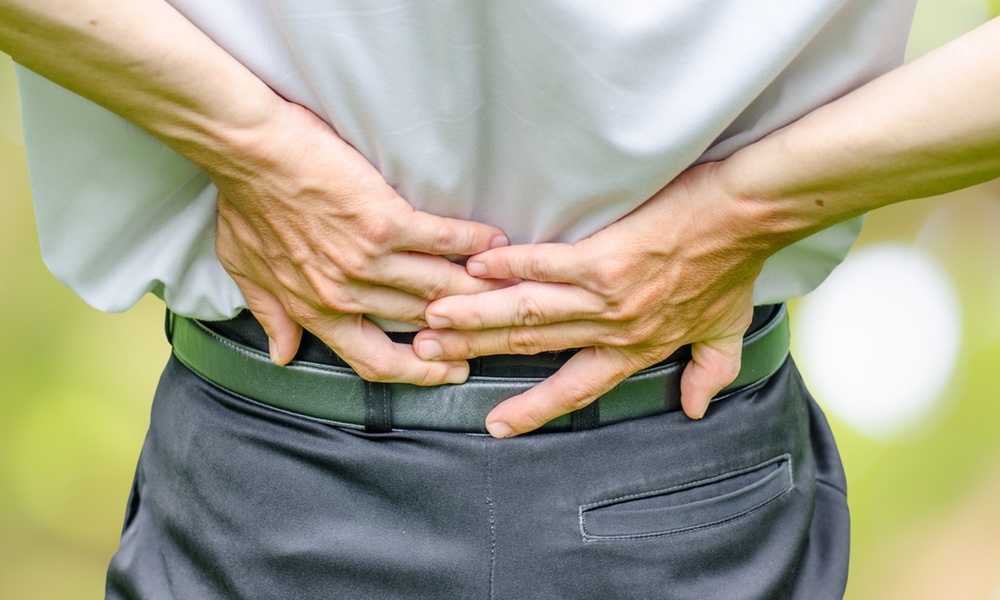Pressure ulcers – better known as bedsores – are lesions on the skin (and/or underlying tissue) that are caused by unrelieved pressure resulting in tissue damage. They usually develop over bony areas of the body, often in the lower limbs (ankles and hips are common), but they can occur almost anywhere (for example, in the nostrils of patients with oxygen tubing, in the corners of the mouth in patients with endotracheal tubes, and between fingers in patients with rheumatoid arthritis).
Pressure ulcers generally start as a blister or superficial crater, and then become deeper open sores.
Pressure ulcers are quite common in hospitals and other institutional settings. In acute care hospitals they occur in about 3-15% of patients; they occur about a third of elderly patients who have had hip fractures; and the number rises to as much as 50% in critical care patients. Ten to 35% of patients admitted to nursing homes have pressure ulcers, though this rate decreases somewhat for patients who have been there longer. Because there are other reasons for skin breakdown, it is important to be examined and diagnosed by a doctor so that the appropriate treatment can be determined. In this article, we’ll discuss the symptoms and diagnosis of ulcers, as well as their treatment and tips for prevention.
There are several types of skin ulceration. Pressure ulcers or bedsores occur when the skin is subjected to constant pressure, which is why they happen so frequently in hospitals and in older patients. They generally start as a blister or superficial crater, and then become a deeper open sore. In addition to pressure ulcers, areas of skin breakdown may be due to other types of ulcers, having to do with insufficient blood flow or to diabetic neuropathy.
Insufficient blood flow through the veins usually occurs in the lower legs, and can result in venous insufficiency ulcers, which are often chronic and difficult to heal.
A related condition, caused by insufficient blood flow through the arteries, is known as arterial insufficiency ulcers, which are painful lesions that usually occur over the ankle or other areas of the foot. Although they may be seen near bony prominences (i.e., joints), they are distinguished from pressure ulcers by their “punched-out” or star-like appearance. The wound may be pale and dry, surrounded by red and taut skin, and can include an area of dead skin.
Diabetic ulcers occur on the foot, usually over the joints or on the top of the toes. These ulcers often occur on the ball of the foot in diabetic patients, due to neuropathy or repetitive injury. Diabetic foot ulcers are often surrounded by a significant thickening of the skin, and are usually insensitive to touch.
There are other, less common causes of ulcers in the legs and feet, which include connective tissue diseases (e.g., rheumatoid arthritis), sickle cell disease, and certain forms of cancer. One’s doctor should take special precaution to rule out these more serious conditions before arriving at a diagnosis of a pressure ulcer.
Pressure to the skin lasting longer than two hours produces irreversible changes in skin tissue.
Medical conditions linked to intrinsic risk factors are far-ranging and include anemia, infection, peripheral vascular disease, edema, diabetes, stroke, dementia, delirium, alcoholism, fractures and malignancies. Simple, age-related factors such as reduced fat and muscle mass with which to dissipate pressure also increase risk. Lower levels of Vitamin C as one ages may also increase the risk of pressure ulcers by causing blood vessels and connective tissue to become fragile. Reduction in the number of blood vessels serving the tissue of the skin is another risk factor that occurs with aging.
When a person sits, their sitting bones bear the greatest pressure, often pressure greater than your capillaries can accommodate. Pressure ulcers can actually occur from the “inside-out” given that the muscle is more sensitive to pressure than is the skin. Because the outer layer of the skin shows signs of tissue death relatively late in the development of an ulcer, once the skin starts to show indications of the presence of an ulcer, the ulcer may be even more progressed than meets the eye. Factors such as hypotension (low blood pressure), dehydration, heart failure or medications may also contribute to pressure ulcer development.
Ulcers are classified as being Stage I, II, III, or IV, depending on factors such as redness, which layers of the skin are affected, whether there is blistering or a “crater-like” appearance, and whether underlying tissues (muscle, bone, or tendons) are affected.
Stage IV ulcers are severe, and can include damage to multiple underlying tissues, such as the muscle, bone, tendons, and joints. A local infection may include a foul odor, greenish or copious drainage, and a dull whitish or pink area of the exposed wound. Cellulitis, a common skin infection, is marked by redness, warmth, swelling or tenderness. Systemic infection leads to fever and high white blood cell count. Illustrations with accompanying photographs of the different stages of pressure ulcers are available here.
When pressure ulcers heal, the deep tissue that is affected (muscle, fat, and deeper layers of skin) does not grow back in a way that replaces the same tissue with the same anatomy. The stages do not reverse themselves, but rather the “hole” is filled with scar tissue and covered over by a new layer of skin. Appropriate medical treatment is critical, in order to give the wound the best chance to heal well.
As you might guess, reducing the risk of developing a pressure ulcer in the first place is the best recommendation for people in hospitals or those who must be in bed or seated for long periods of time. Reducing pressure on the skin is a major component of reducing the risk of ulcer formation. It is important for hospital employees to turn patients with limited mobility over at frequent intervals. Avoiding lying on your side with your legs at a 90° (and therefore with excessive pressure on the hip) and avoiding pressure on the ulcer is traditional advice, although newer studies have provided mixed results at the effectiveness of any one ulcer risk reduction method.
Sitting should be limited to less than two hours, with the use a foam or plastic seat cushion (and reposition at least every hour). Patients should be educated to shift their weight every 15 minutes, to perform range of motion exercises to prevent contractures, and to walk, if possible.
Other measures used by hospitals and long-term care settings to reduce extrinsic contributing factors include keeping the head of the bed elevated not more than 30° except when eating, using “pull sheets” to move patients up in bed, and keeping the heels off the bed with pillows or foam pads placed under the mid-calf to ankle. Sitting should be limited to less than two hours, with the use a foam or plastic seat cushion (and reposition at least every hour). Patients should be educated to shift their weight every 15 minutes, to perform range of motion exercises to prevent contractures, and to walk, if possible.
Using a good support surface is important, although no single support surface is effective for all situations. Foam overlays for mattresses (for patients whose activity is limited for a short time only), and air or water mattresses (for patients with or at risk for Stage I/II ulcers) are common options.
Other devices, known as adjunctive devices, such as sheepskin, heel and elbow protectors, and trapezes (to help a person shift in bed), may also be helpful in certain situations. There are many options depending on the condition of the patient, and there is little evidence that supports the use of a specific support surface over others.
Reducing moisture is another good way to reduce risk: often, a thin layer of a petroleum-based product is used to avoid skin damage by urine or feces. Non-caking body powder may be used to reduce friction and shearing and to absorb moisture. It is particularly important to manage incontinence, since it can be a significant contributing factor.
Good nutrition is required for ulcers to have an adequate chance to heal completely. Patients who are evaluated for malnutrition typically need to consume a high-protein, high-calorie diet, along with nutritional supplements. Vitamin C and zinc are given to patients with deficiencies.
The keys to reducing the risk of pressure ulcers include identifying and managing risk factors, as well as regular examinations of skin. The Norton or Braden Scale is often used to assess ulcer risk.
Treating pressure ulcers generally involves alleviating the source of the pressure, as well as reducing friction, shearing, and moisture. Nutrition should be given high priority, in order to give the body the best tools to heal. Doctors should cleanse the wound initially and again with each dressing change, and, of course, any infection must be treated if present.
Nutrition should be given high priority, in order to give the body the best tools to heal.
Physicians base the type of treatment they choose on the stage of the ulcer, as well as general principles for care of any type of wound. Less severe ulcers (Stages I and II) may simply need to be cleaned with saline, dressed, and bandaged. More extensive treatments may be necessary for Stage III and IV ulcers, including removal of dead tissue (debridement), possibly via surgery, and more sophisticated methods of dressing and bandaging to promote the growth of new tissue. As mentioned, antibiotics – either topical or systemic – may be used if it is determined that they are necessary. In very bad cases (Stage IV lesions), osteomyelitis (infection of the bone) may be present, in which case a bone biopsy may occasionally be necessary.
For the mild to moderate pain that is often associated with pressure ulcers, NSAIDs (like ibuprofen) and acetaminophen are often used and are preferable to opioids since the sedative effects of the opioids can promote immobility. However, opioids may be necessary prior to dressing changes or debridement. Treatment of the pressure ulcer itself is the ultimately the best treatment for the pain they cause.
Pressure ulcers are distinguished from other common causes of skin breakdown by their location over bony areas of the body. A number of extrinsic and intrinsic risk factors contribute to the formation of pressure ulcers, especially in circumstances where the skin does not have adequate blood flow. Prevention of pressure ulcers includes treatment of underlying internal risk factors, such as anemia, infection, vascular disease, diabetes, and edema. Reduction of external risk factors such as pressure on the skin, especially by using appropriate support surfaces, may also be useful.
Doctors determine the best treatment method depending on how severe the ulcer is, and these may range from cleaning, dressing, and bandaging to systemic antibiotics to surgery to remove damaged tissue or bone. It is important to diagnose ulcers correctly, since other skin conditions can mimic the symptoms of the ulcer. Since pressure ulcers can become serious infections involving multiple underlying tissues, it is critical to bring any suspicious-looking lesions to the attention of your doctor, who can make a diagnosis and determine the best course of treatment.




